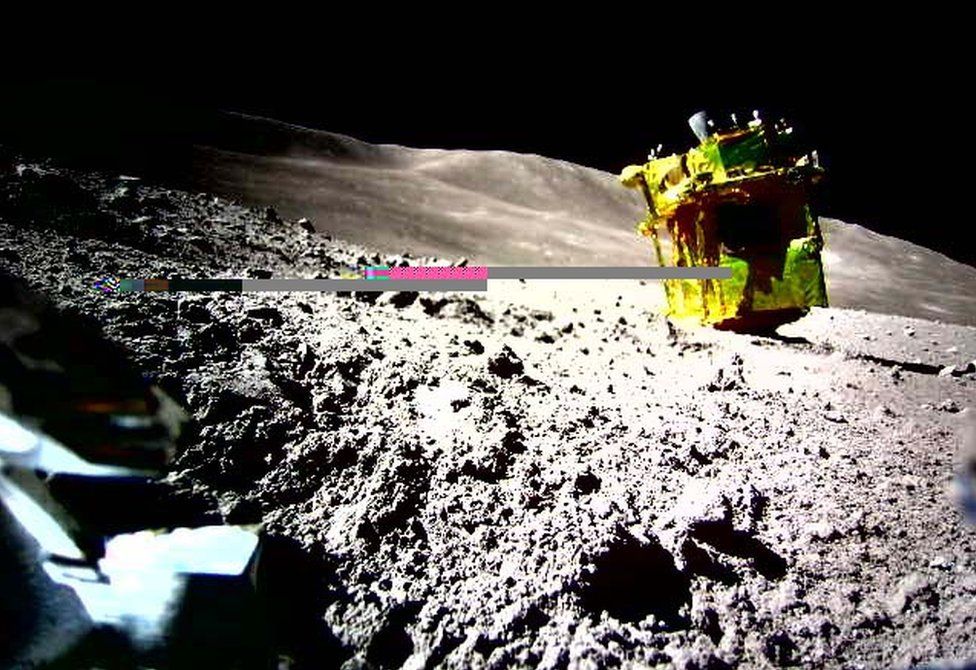ARTICLE AD BOX
 Image source, JAXA
Image source, JAXA
The Slim lander may yet come back to life if its solar cells can be made to work
By Jonathan Amos
Science correspondent
Japan's Moon lander ended up on its nose when it made its historic touchdown on the lunar surface.
The first picture of the stricken Slim spacecraft shows it rotated 90 degrees from how it should have come to rest.
This will go some way to explaining the difficulties it has had in generating the electricity needed to operate.
The image was captured by the small baseball-sized robot called Sora-Q that was ejected from Slim moments before touchdown last Friday.
"An abnormality in the main engine affected the landing attitude of the spacecraft," the Japanese space agency Jaxa said.
Image source, Jaxa
Image caption,An artist's impression of the orientation the Slim spacecraft should have adopted
To get the picture to Earth, Sora-Q first had to transmit it to a second roving robot, Lunar Excursion Vehicle 1, or Lev-1. This hopping vehicle has radio equipment that can contact mission control independently of Slim.
The lander itself was shut down three hours after arrival because it could not get its solar cells to work. With the battery rapidly draining, Jaxa officials took the decision to hibernate Slim.
Their assumption - which seems to be borne out by the Sora-Q image - is that the main spacecraft is orientated in a way that prevents the solar cells from seeing the Sun.
The hope is to wake Slim when lighting angles change at its landing location.
Image source, JAXA
Image caption,Slim's on-board camera sent back a view of its surroundings
Before hibernation, controllers were able to pull down a series of pictures of the surface taken by its on-board infrared camera.
These show the spacecraft to be on a slope, surrounded by small rocks.
Slim's landing location is at the edge of an equatorial crater known as Shioli.
The landing on Saturday at 00:20, Japan standard time (15:20 GMT) made Jaxa only the fifth national space agency to achieve a soft touchdown on the Moon - after the US, the former Soviet Union, China and India.
Image source, NASA/LRO
Image caption,The targeted landing site was on the slopes approaching Shioli Crater, which is just south of the Moon's equator

 1 year ago
84
1 year ago
84








 English (US) ·
English (US) ·